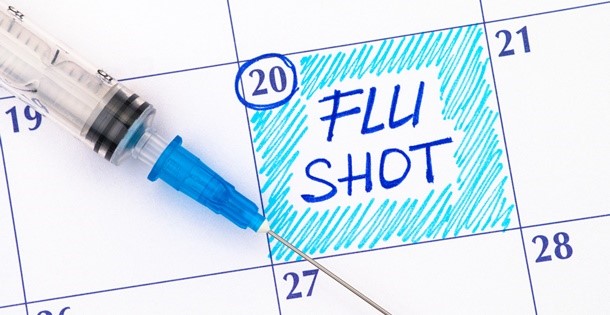“Your Weekly Checkup” is our online column by Dr. Douglas Zipes, an internationally acclaimed cardiologist, professor, author, inventor, and authority on pacing and electrophysiology. Dr. Zipes is also a contributor to The Saturday Evening Post print magazine. Subscribe to receive thoughtful articles, new fiction, health and wellness advice, and gems from our archive.
“Did you get your flu shot?” should be the first question your doctor, nurse or pharmacist asks during your visit over the next few months. Your answer should be a resounding, “Yes!” I got mine in October, but it took me until a few weeks ago to convince my wife to get hers. Do not rely on last year’s shot since it will not be effective for this year’s flu epidemic, which is the worst in a decade.
According to a recent New York Times article, every state except Hawaii has experienced widespread flu activity, closely paralleling the flu season several years ago with the same H3N2 flu strain dominant. The Centers for Disease Control reports that 6.3 percent of all Americans seeking medical care now have flu symptoms characterized by fever, chills, cough, sore throat, and muscle aches. The H3N2 virus, which killed about 1 million people worldwide when it emerged in 1968, is part of every flu shot so that some immunity results, even though the virus has changed a bit. This is important because if you have gotten your flu shot and still contract the flu—the vaccine is only 20-30% effective against three or four different viral strains—your chances for a milder case are increased.
The CDC estimates that 9 million to 36 million people become ill with the flu each year in the United States and that 140,000 to 710,000 require hospitalization. The Influenza Division of the National Center for Immunization and Respiratory Diseases “warned this flu season is very active and was ‘probably peaking’ last week” when the CDC counted 30 pediatric flu-related deaths. Even in a mild year, the flu kills 12,000 Americans (56,000 in a bad year), mostly very young or older folks. Middle-aged people who also have other health problems such as heart or lung disease, compromised immune systems, diabetes, or obesity are at increased risk. They should definitely get the vaccine, as should pregnant females, particularly since the vaccine also provides six months of protection to the newborn. Importantly, recent information indicates that the flu also increases the risk of having a heart attack six-fold. A high-dose flu vaccine containing four times the dose of the standard vaccine appears to provide better protection for older adults. If you do get the flu despite immunization, immediate treatment with antiviral medications such as Tamiflu, Relenza and Rapivab can be effective.
Are there downsides to getting the vaccine? Mild side effects include soreness, redness or swelling at the injection site, low-grade fever and aches. More serious side effects can occur but are very unusual.
The flu season is upon us in full force, probably lasting well into April and May. If you have not yet gotten your flu shot, do so today!
Become a Saturday Evening Post member and enjoy unlimited access. Subscribe now



